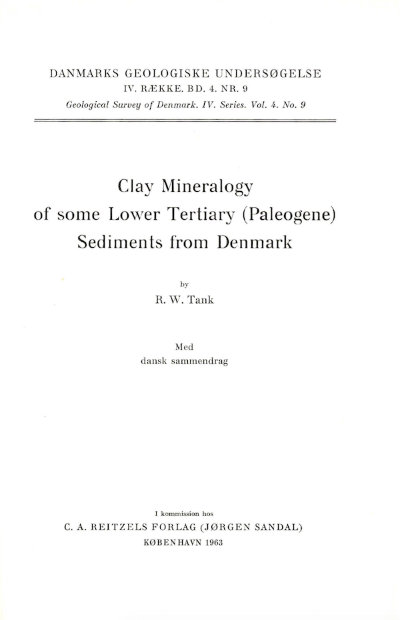Clay Mineralogy of some Lower Tertiary (Paleogene) Sediments from Denmark
DOI:
https://doi.org/10.34194/raekke4.v4.6998Abstract
108 samples from the Paleogene rocks of Denrnark were examined by standard X-ray techniques and their clay suites form the basis of the present study. The X-ray data have permitted a three-fold mineralogical zonation of the Danish Paleogene.
The oldest zone (Zone I) is characterized by a high montmorillonite content, minor or trace amounts of illite and segregated mixed-layer clay minerals and the absence of kaolinite. The boundaries of Zone I coincide with the Paleocene Series. The clay minerals are detrital and are derived from a carbonate terrain bordering the Fennoscandian massif. Diagenetic changes in the marine environment and segregation by sorting and floculation are important factors accounting for the high montmorillonite content.
A middle zone (Zone Il) is characterized by the predominance of amorphous material. Minor amounts of montmorillonite, illite and kaolinite are present and represent alteration produets of volcanic ash. Zone II is restricted to the Mo Clay Formation.
The youngest zone (Zone III) contains variable amounts of montmorillonite, illite, kaolinite and random mixed-layer montmorillonite-illite. The boundaries of Zone III appear to extend from the lower Eocene to the Miocene. The clay minerals of Zone III are products of the alteration of the volcanic material of the Fennoscandian massif. Changes in the conditions of the source area and the physical environment of deposition account for the mineralogical variations.
Downloads
Published
Issue
Section
License
This article is distributed under a CC-BY 4.0 licence, permitting free redistribution and reproduction for any purpose, even commercial, provided proper citation of the original work. Author(s) retain copyright over the article contents.


